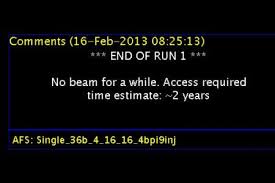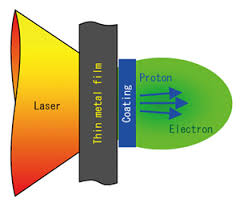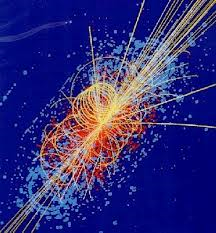Overview
The Large Hadron Collider is currently the world’s largest particle accelerator. It is located on the border between Switzerland and France, started up in 2008 and shut down for repairs in 2013. It is scheduled to restart in March of 2015, the International Year of Light.
What Is It?
The European Organization for Nuclear Research, or CERN, is an international community of physicists, engineers, and other scientists who study the fundamental particles of the universe. The huge scientific complex between France and Switzerland includes the Large Hadron Collider, which is a ring that is 27 km long (about 17 miles). By the time the particles within it collide, they are moving at nearly the speed of light.
How Does It Work?
Experiments made with hydrogen begin with a single pressurized canister of hydrogen gas. Hydrogen atoms are stripped of their electrons when they are passed through an electrical field. The remaining protons are pushed forwards in a stream by electrical fields that switch back and forth between positive and negative to push them along. They are contained in an ultrahigh vacuum so they do not collide with any other particles along the way and lose their momentum. Very powerful magnets focus and bend the stream so that the particles can move in a precise circle. Although particles are accelerated at very high speeds, the energy involved is measured in small units called electronvolts (eV), a measurement of the force needed to accelerate 1 electron by one volt. A MeV is a million, or 106eV, a GeV is a giga or 109eV and a TeV or tera, or 109eV.
The Process of Acceleration
Protons move through 4 other accelerators before they reach the Large Hadron Collider. The first accelerator, LINAC 2, was built in 1978. It accelerates protons to an energy of 50 MeV, a little over 30% of the speed of light. The energized protons go to the Proton Synchrotron Booster, which consists of 4 rings. There, they are accelerated to 1.4 GeV, 92% of the speed of light. The Proton Synchrotron itself accelerates them to 25 GeV, 99.93 % of the speed of light. The accelerated particles move to the Super Proton Synchrotron. That machine consists of over 1300 magnets and accelerates particles to 450 GeV, 99.998% of the speed of light.
Using Superconductors
The LINAC accelerator, Proton Synchrotron Booster, Proton Synchrotron, and Super Proton Synchrotron all use magnets that operate at room temperature. The Large Hadron Collider uses even stronger magnets that are superconducting, cooled to -271°C with liquid helium, colder than outer space. By the time the particles smash against one another they have a force of 7 TeV, 99.999% of the speed of light. Although particles cannot move at speeds greater than the speed of light in a vacuum, they can attain very great energies, and collide with enough force to break the strong bonds that hold them together. That is enough to dislodge some very unusual quantum particles, including the Higgs boson.
Interested in physics tutoring services? Learn more about how we are assisting thousands of students each academic year.
SchoolTutoring Academy is the premier educational services company for K-12 and college students. We offer tutoring programs for students in K-12, AP classes, and college. To learn more about how we help parents and students in Houston, TX: visit: Tutoring in Houston, TX




